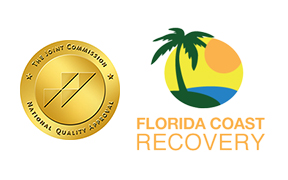Understanding Breathalyzers: The How, Why, and What
According to the National Highway Traffic Safety Administration (NHTSA), every two minutes a person is injured in a drunk driving accident. If that’s not powerful enough for you, consider that drunk driving is still the leading cause of death among teenagers.
With staggering statistics like that, it’s no wonder that police departments across the country are cracking down on drunk driving and using breathalyzers to confirm their suspicions. Penalties are steep for those convicted and can include a significant fine, loss of license, prison, or a court-ordered alcohol detox program.
There are a few tests the police use to assess sobriety—walking a straight line, saying the alphabet backward—but they are often not accurate and do not assess alcohol intoxication or the amount of blood alcohol concentration (BAC).
Blood alcohol concentration is best determined by a blood or urine test, which is not practical to issue at a traffic stop, so law enforcement uses a simple and easy-to-administer breathalyzer test. Breathalyzers test breath alcohol content.
How Does a Breathalyzer Work?
- Alcohol breath-testing devices use the amount of alcohol in exhaled breath to calculate the amount of alcohol in a person’s blood or their BAC.
- Alcohol consumed by a person goes into the mouth, throat, stomach, and small intestine into the bloodstream.
- As the blood goes through the system, the lungs oxygenate it and the alcohol is carried to the brain and lungs, where it can be exhaled through the breath.
- A breathalyzer measures how much alcohol is in a person’s breath by using the measurement to approximate how much alcohol in a person’s oxygenated blood or BAC.
While it all sounds like a complicated process, take note that BAC can be measured within minutes of a first drink and reaches its highest levels about an hour after drinking. To be considered legally drunk in most states, your BAC cannot be over 0.08 percent.
Studies on impaired driving conducted by the NHTSA found that a person is substantially impaired at this level and should not be driving. There are no hard and fast rules about how many drinks it takes to get you there. There are many factors involved, including age, weight, type of drink, emotional state, and how much food you have consumed.
There is never a good reason to drink and drive. The stakes are simply too high for you, for someone you love, or to anyone else on the road. If fines and prison aren’t enough to make you rethink drinking and driving, a lifetime of guilt knowing that you hurt or maybe killed someone should.
At Florida Coast Recovery, we understand alcohol addiction. If you are struggling, can’t stop drinking, and need help, call us today at 1-954-990-7101 to learn more about our alcohol detox center in South Florida. Our multidisciplinary approach can help get you on your way to recovery and a life free from addiction.
Sources
- http://www.madd.org/drunk-driving/about/drunk-driving-statistics.html
- http://www.lapdonline.org/search_results/content_basic_view/23494
- https://teens.drugabuse.gov/blog/post/science-drug-testing-how-alcohol-breath-tests-work
- http://electronics.howstuffworks.com/gadgets/automotive/breathalyzer.htm
- https://www.ncbi.nlm.nih.gov/pmc/articles/PMC1124861/
- http://www.lionlaboratories.com/testing-for-alcohol/



Leave a Comment